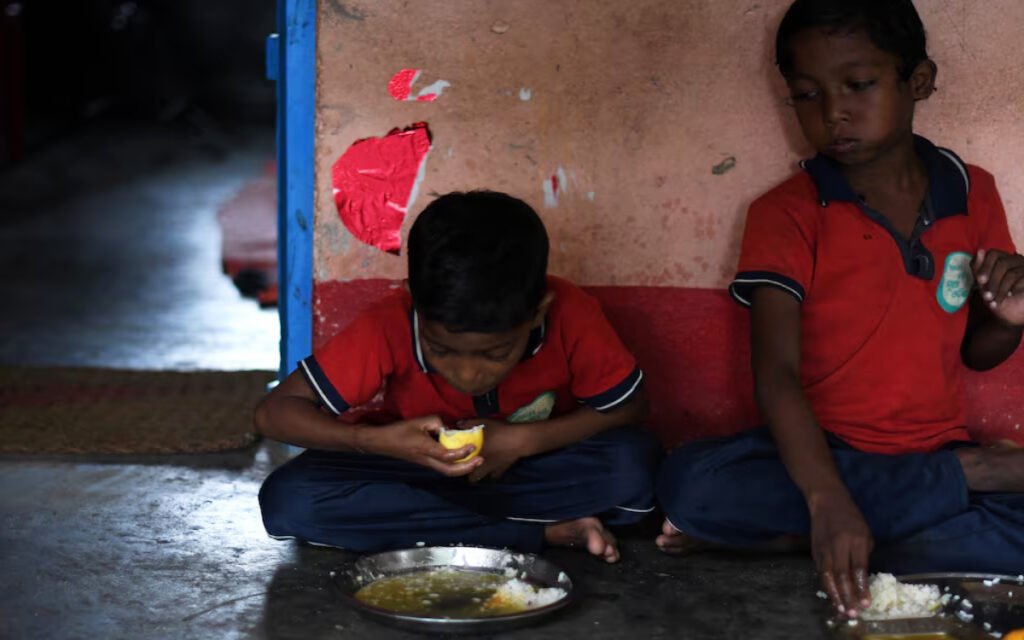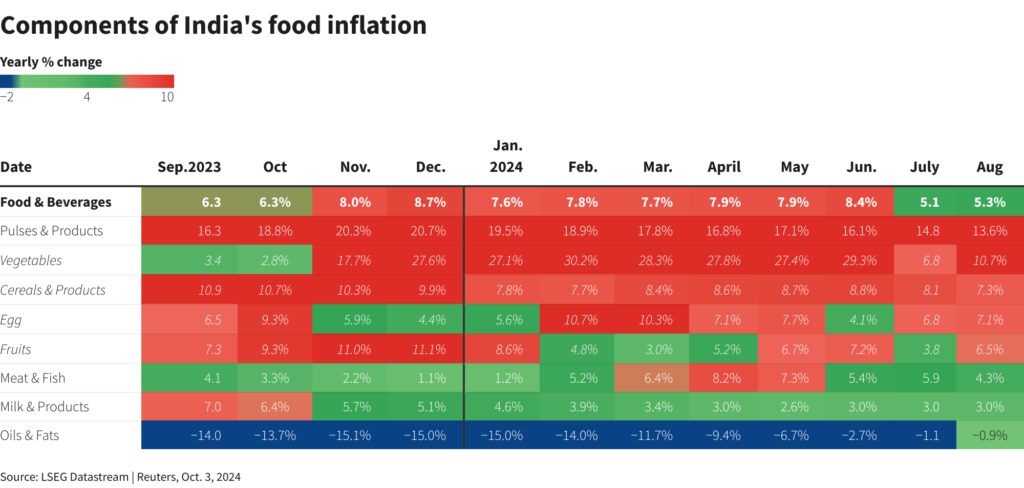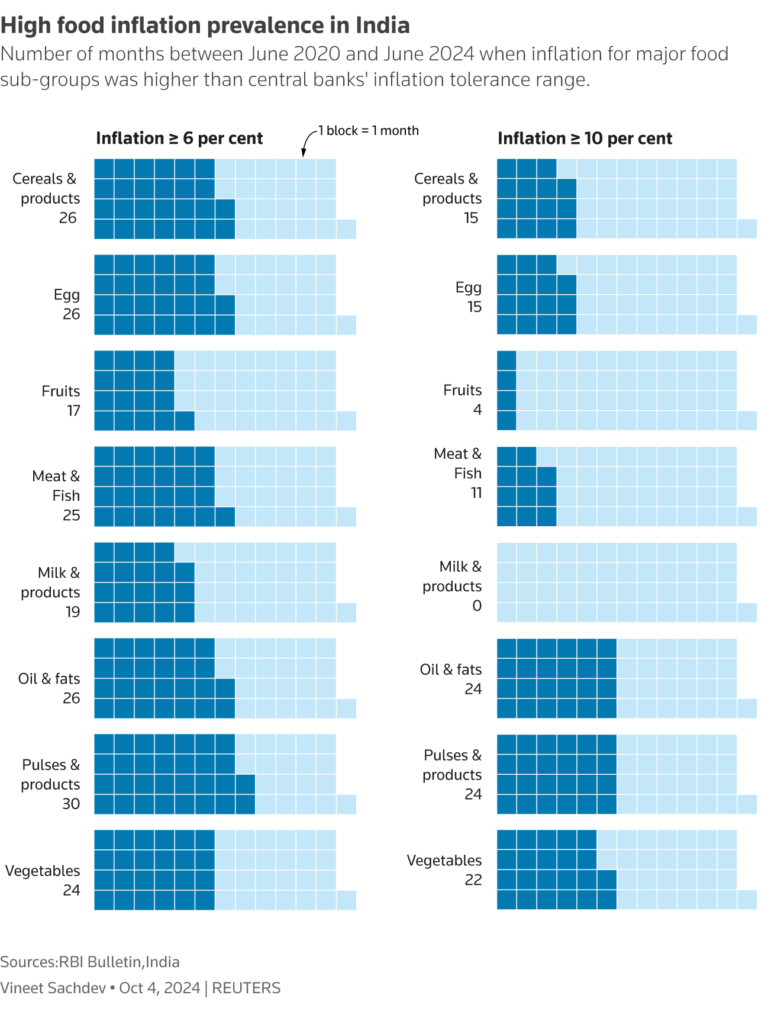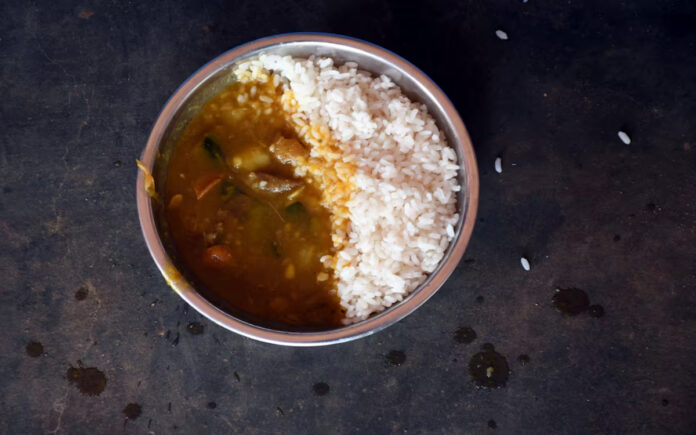Nearly two years of persistent food inflation in India has resulted in less nutritious meals for impoverished children, as government-funded school meal programs face cutbacks due to rising prices of vegetables, fruits, and pulses. This three-decade-old initiative, designed to draw underprivileged children into school and provide basic nutrition, highlights the inflationary impact on the nation’s most vulnerable populations and underscores the growing inequality in the world’s fastest-growing major economy.
Interviews conducted by the international news agency Reuters with 21 school teachers across four states, as well as discussions with families and researchers, reveal that schools have been compelled to economize on essential ingredients. This is largely due to the fact that the meal budget for the program has remained stagnant for the past two years, even as food prices continue to soar. The initiative serves approximately 120 million children across one million government and government-aided schools up to class 8, according to data available on the scheme’s official website. Quality control of the meals is managed by teachers and school administrators.
“The budget for the mid-day meal scheme is not regularly adjusted for inflation, as it should be, compromising the quality of the meals,” stated Dipa Sinha, an independent development economist and researcher involved with the ‘Right For Food’ campaign, an informal network of organizations and individuals advocating for food rights. “While the government provides free grains for these meals, this does not compensate for the reduction in other nutritious components like vegetables, pulses, milk, and eggs due to insufficient budgets,” she added.

An illustrative case is that of 8-year-old Ranjit Nayak, who resides in Ghugudipada village, approximately 150 kilometers from Bhubaneshwar, the capital of Odisha. Ranjit’s family of five survives on daily wages of about 250 Indian rupees ($2.98), leaving them with little more than boiled rice on most days. Often, the school provides his first meal of the day, but recent food price spikes have negatively affected this experience.
“My son is sometimes satisfied with the school meal, but other days it’s just yellow water with hardly any dal (lentils),” lamented Ranjit’s mother, Arati Nayak, a 26-year-old who weaves dry leaves into disposable plates, earning only 25 rupees a day. The rising costs of cooking oil, vegetables, and potatoes have made it increasingly challenging to provide nutritious meals for students, according to Chhabi Nayak, head of the managing committee at Ghugudipada school. As a result, the school opts for cheaper lentil varieties and skips more nutritious vegetables like carrots to manage their budgets.

Soaring Food Prices
India’s food inflation has averaged 6.3% between June 2020 and June 2024, according to a central bank study published in August. This marks a significant increase compared to the 2.9% average in the previous four years. While inflation eased slightly in July and August due to statistical base effects, it is expected to have risen again in September.
Despite soaring prices, the minimum budget of 5.45 rupees for each primary school student and 8.17 rupees for upper primary students under the scheme has not been raised since October 2022. An official from the federal Ministry for Education, who requested anonymity, stated that a decision to increase allocations for the current 2024-25 fiscal year has been postponed due to upcoming elections.
Also Read | No Ceasefire Discussions: Zelensky Urges Western Allies for Increased Support
Price increases have been particularly persistent in the vegetable sector, which has experienced inflation exceeding 10% over the past 22 months. Pulses and oils have similarly faced double-digit inflation for 24 months, and eggs for 15 months. Sixteen of the 21 teachers who spoke to Reuters reported that inflation has negatively impacted their budgets, making it increasingly difficult to provide nutritious meals.
A teacher from Sitapur district in Uttar Pradesh revealed that fruits have not been served for the past six months and that green vegetables have been replaced with less nutritious options like pumpkin. “The milk given to students is little more than white water,” the teacher remarked, suggesting it may have been diluted.

Are Students Getting Enough Calories?
The government scheme mandates that each primary school meal must include 450 calories and 12 grams of protein, which increases to 700 calories and 20 grams of protein for upper primary students. Although periodic audits are conducted, the nutrition levels of meals are not measured or recorded daily, according to teachers and researchers.
Recent studies examining the nutritional impact of rising inflation and the cutbacks in mid-day meals are limited due to insufficient data availability. “If the quality of meals for students is deteriorating in a country where about 50% of the population lacks access to a healthy diet, it would have significant nutritional implications,” Sinha explained.
Also Read | UN Report Warns Pacific Island Nations at Risk of Becoming Hubs for Global Crime Gangs
According to the Food and Agriculture Organization (FAO) 2024 report on the ‘State of Food Security and Nutrition,’ 55% of the Indian population could not afford a healthy diet as of 2022—the latest available data. The consequences of high food inflation must also be considered within the context of low wages in India, noted Rajendran Narayanan from Azim Premji University, who leads a curriculum focused on ‘Data, Democracy and Development.’
Narayanan referenced a 2019 federal government committee recommendation for a national minimum floor wage of 375 rupees per day, based on the amount necessary to ensure a balanced diet for each individual. In 2022-23, approximately 300 million workers earned less than this threshold, according to Narayanan’s findings derived from the government’s labor force survey. This situation underscores the need for enhanced nutritional programs during periods of high inflation; however, Narayanan stated that the “political will” to implement such measures is lacking.



